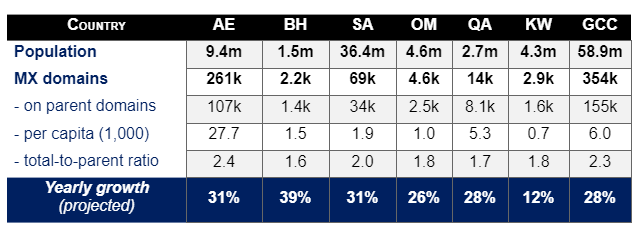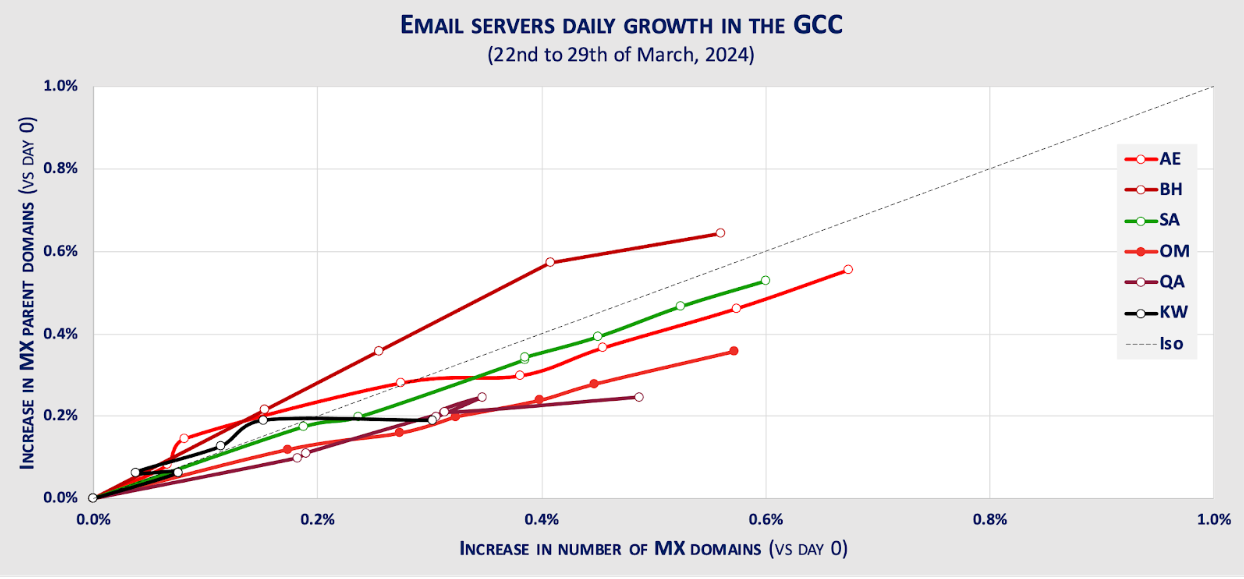By Rudy Guyonneau, PhD Director of Research
The most common truism in cybersecurity might be that “cyberspace is growing constantly” and, with it, that “the threat landscape is everchanging, consistently expanding and adapting”. A natural consequence of the digital transformation through which businesses, and people, are connecting, and where threats evolve to take advantage of new products emerging on to the marketplace. This statement is certainly true. It is also anxiety-inducing, since it tends to consign us, cyber operators, to the spectator’s seat.
Anxiety, as well as fear, are best dealt with by naming. That is, by making the unknown, known. It is no coincidence that science starts with measuring things. The Taqdeer initiative at OryxLabs consists of quantifying this growth, numbering the dimensions of cyberspace to facilitate its management; “what gets measured gets managed”.
Cyberspace is vast and complex; we will approach it piece-by-piece, with a focus on our region. As such, we are us kickstarting Taqdeer with the topic of email servers deployment across the GCC.
Emails servers as a marker of growth
The internet was created to allow users on different computers to exchange messages. As such, measuring the internet could well be examined by looking at email servers, which implement this very function: information exchange. Under this strong hypothesis, it becomes reasonable to assess the degree to which a given digital perimeter is growing and, in doing so, possibly gather insights on how to evaluate the level of development of a country in terms of technological progress.
As of 29th of March 2024, the GCC region featured 354,249 email servers2 (Table below), identifying the UAE with the most email servers per capita (27.7 every 1,000 people). Monitoring these datapoints over a one-month period, we could observe a daily growth that translates to a +28% email servers per year for the region,
- with Kuwait trailing behind both in growth and per capita (resp. +12%, 0.7),
- UAE (+31%), Saudi Arabia (+31%), Qatar (+28%) and Oman (+26%) in a pack of rapidly expanding digital perimeters,
- and Bahrain (+39%) expanding aggressively (given it having the smallest perimeter to start with: 2.2k MX domains).
As a sidenote, we remark the ratio of total MX domains to MX parent domains could be an indicator of technological advancement (ratio>= 2.0), if AE and SA are assumed more advanced than the rest of GCC3.

The challenge
Attempting to measure any aspect of cyberspace represents a significant challenge, since cyberspace is essentially an opaque space, where events happen that one cannot observe without the proper tooling: said otherwise, humans are missing a “cyber-eye”.
We at ORYXLABS are attempting to fill that gap, by equipping our clients with the technological foresight, vision and mapping to support them in driving cybersecurity at scale.
How accurate is that eye though? Answering this is not straightforward: no ground truth exists to compare it to and establish its accuracy objectively. Pioneers have to take risks though, in their attempt to blaze a trail, which take the form of reasonable assumptions. Here are ours:
Fortunately, we could verify these over the time period (shown over the last 8 days in the figure below):

Conclusion
How much does the space of email servers grow? In the GCC region, it would grow at a rate of +28% over 2024. The number is significant, corresponding to a phase of strong technological development, which we assume is in line with regional and country-level visions and efforts4. As a consequence, the attack surface of the region will increase proportionally, highlighting the importance of cultivating cyber-awareness and governance in order to optimise budget allocation. It is more efficient to enforce proper email authentication practices upstream, than it is to patch downstream a space that is expanding faster than human efforts can keep up with.
Is this rate stable overtime? What could explain local inflections against the baseline? How does it compare with other countries? We are only at the beginning of an ambitious, yet productive and valuable, initiative to understand and control cyberspace. Advancing step-by-step, with rigor, dedication and in cooperation with the wider cybersecurity community, will allow us to achieve our Taqdeer objective. So, let’s get going.
-------------------------------------------------------
1 In Arabic, “quantifying”.
2 Defined as MX servers found on main and sub-domains.
3 QA as an exception, since it can be assumed to be technologically advanced, yet features a ratio below 2.0.
4 Comparatively, more mature countries, such as the USA for example, would be expected to have flatter rates.
